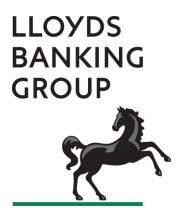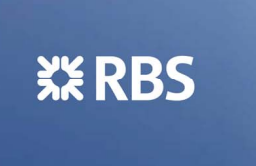With a slow European economy and exposure to the U.S. mortgage meltdown, British banks Royal Bank of Scotland Group (RBS +0.06%) and Lloyds Banking Group (LYG +0.96%) have both seen sharp falls in their share prices since the crisis began. But even as both banks remain partially state-owned today, each bank has a piece of good news for its investors.

Source: Lloyds Banking Group.
Return of the dividend?
Lloyds Banking Group has been able to return to profit and reduce the government's stake to 25% from as high as 39%. Despite this, Lloyds has still not paid a dividend since it was suspended in 2008, leaving long-term shareholders without their capital return and keeping income investors away.
The Financial Times reports that Lloyds' underlying profit rose more than a fifth in the first three months of the year, strengthening the bank's position in talks with regulators. At the same time, Lloyds noted it's moving forward with a plan to divest its stake in TSB, a condition of its government bailout.
Bringing back the dividend would be a major boost for Lloyds as it would attract income investors and dividend-only investment funds. The capital return could eventually grow to be a sizable one as Lloyds has noted its intentions to eventually pay up to 70% of earnings as dividends.
Return to profit
The years since the crisis have not been kind to Royal Bank of Scotland Group. The bank has reported profits mixed with large losses, including a loss for the year 2013 stemming from an impairment charge related to the creation of an internal bad bank. This pattern, along with the 81% government ownership of the bank, has hurt RBS' appeal to many investors.

Source: RBS.
But the market was more upbeat on RBS on Friday, as shares rose nearly 8% following the bank's first quarter earnings showing profit more than tripled to 1.19 billion pounds. Part of the profit came from one-time gains but investors seemed particularly attracted to a reduction in loan impairment charges.
Royal Bank of Scotland is not out of the woods yet. The bank still needs to manage the stress tests without resorting to shareholder value destructive measures to meet capital requirements. In addition, RBS will need to demonstrate enough stability to get the government to begin reducing its massive stake. Until this stake is significantly reduced, it will be difficult for RBS to pay a dividend and political risk will continue to follow the bank's stock.
Banking on a turnaround
In a long battle, Lloyds Banking Group and Royal Bank of Scotland Group continue to make progress from the lows of the financial crisis. I maintain that the best approach to these banks is as long-term recovery investments since the short-term is difficult to predict but the long-term recovery still seems intact.
As has been true for virtually the entire post-crash period, Lloyds remains ahead of RBS in its recovery as evidenced by consistency of profitability and size of government ownership stake. Because of this, Lloyds will probably both eliminate its government ownership and reinstate its dividend before RBS. With this most recent information, it appears turnaround efforts at Lloyds and RBS remain on track and recovery oriented investors should consider these two British banks for the financials side of their portfolio.
